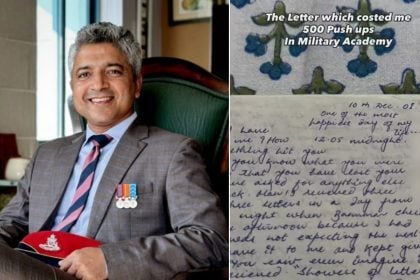Indian Navy Sub Lieutenant Salary: Perks That Make the Sea Life Sweet
The Indian Navy has long stood as a beacon of maritime strength and national pride. As one of the country’s…
Indian Army Chief Salary Revealed – You Won’t Believe the Pay!
The role of the Chief of Army Staff (CoAS) in India is not only pivotal within military operations but also…
NDA vs CDS: Which Exam Will Get You the Officer’s Stars Faster?
When it comes to joining the Indian Armed Forces, two significant pathways stand out: the National Defence Academy (NDA) and…
OTA Chennai vs IMA Dehradun – Which Academy Will Make You Stronger?
Choosing a career path in the Indian Armed Forces is a momentous decision that involves thorough analysis and consideration. For…
Ex-Army Officer’s Decades-Old Love Letter Goes Viral, India Post Joins Nostalgia Wave
Captain Dharmveer Singh shares a 2001 letter from his wife, sparking nostalgia, laughter over “500 push-ups for mail,” and a…
MARCOS Commando Salary & Perks REVEALED – Is It Worth It?
The MARCOS (Marine Commandos) of the Indian Navy stand as a symbol of elite military prowess, renowned for their rigorous…


